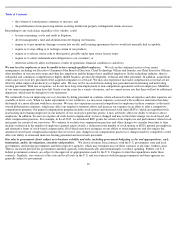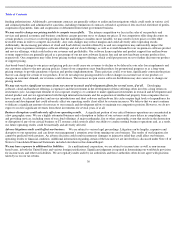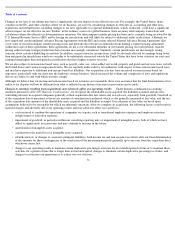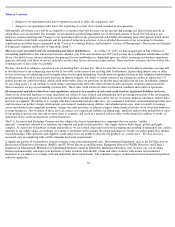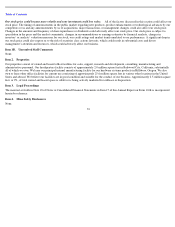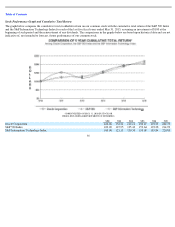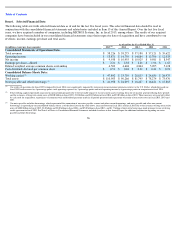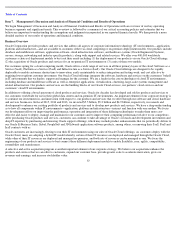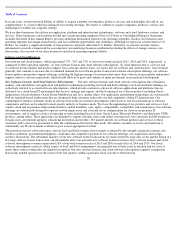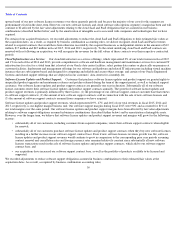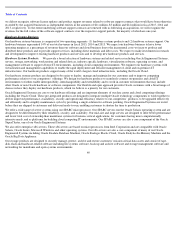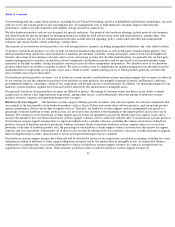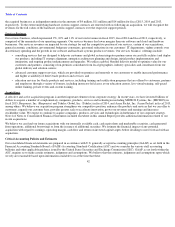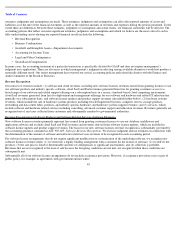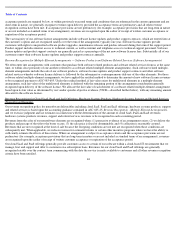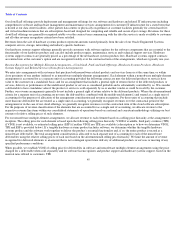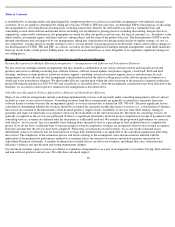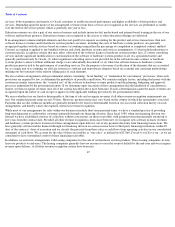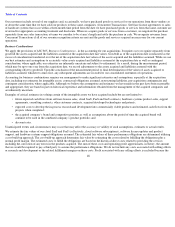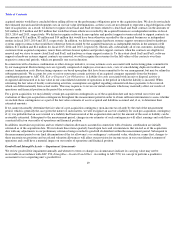Oracle 2014 Annual Report Download - page 43
Download and view the complete annual report
Please find page 43 of the 2014 Oracle annual report below. You can navigate through the pages in the report by either clicking on the pages listed below, or by using the keyword search tool below to find specific information within the annual report.
Table of Contents
upward trend of our new software licenses revenues over those quarterly periods and because the majority of our costs for this segment are
predominantly fixed in the short-term. However, our new software licenses and cloud software subscriptions segment’
s margin has been and will
continue to be affected by the fair value adjustments relating to the cloud SaaS and PaaS obligations that we assumed in our business
combinations (described further below) and by the amortization of intangible assets associated with companies and technologies that we have
acquired.
For certain of our acquired businesses, we recorded adjustments to reduce the cloud SaaS and PaaS obligations to their estimated fair values at
the acquisition dates. As a result, as required by business combination accounting rules, we did not recognize cloud SaaS and PaaS revenues
related to acquired contracts that would have been otherwise recorded by the acquired businesses as independent entities in the amounts of $12
million, $17 million and $45 million in fiscal 2015, 2014 and 2013, respectively. To the extent underlying cloud SaaS and PaaS contracts are
renewed with us following an acquisition, we will recognize the revenues for the full values of these contracts over their respective contractual
periods.
Cloud Infrastructure as a Service: Our cloud infrastructure as a service offerings, which represented 2% of our total revenues in fiscal 2015
and 1% in each of fiscal 2014 and 2013, provide comprehensive software and hardware management and maintenance services for customer IT
infrastructure for a fee for a stated term that is hosted at our Oracle data center facilities, select partner data centers or physically on-premises at
customer facilities; deployment and management offerings for our software and hardware and related IT infrastructure including virtual machine
instances that are subscription-based and designed for computing and reliable and secure object storage; and certain of our Oracle Engineered
Systems and related support offerings that are deployed in our customers’ data centers for a monthly fee.
Software License Updates and Product Support:
Customers that purchase software license updates and product support are granted rights to
unspecified product upgrades and maintenance releases and patches released during the term of the support period, as well as technical support
assistance. Our software license updates and product support contracts are generally one year in duration. Substantially all of our software
license customers renew their software license updates and product support contracts annually. The growth of software license updates and
product support revenues is primarily influenced by three factors: (1) the percentage of our software support contract customer base that renews
its software support contracts, (2) the amount of new software support contracts sold in connection with the sale of new software licenses and
(3) the amount of software support contracts assumed from companies we have acquired.
Software license updates and product support revenues, which represented 49%, 47% and 46% of our total revenues in fiscal 2015, 2014 and
2013, respectively, is our highest margin business unit. Our software support margins during fiscal 2015 were 90% and accounted for 81% of
our total margins over the same period. Our software license updates and product support margins have been affected by fair value adjustments
relating to software support obligations assumed in business combinations (described further below) and by amortization of intangible assets.
However, over the longer term, we believe that software license updates and product support revenues and margins will grow for the following
reasons:
We recorded adjustments to reduce software support obligations assumed in business combinations to their estimated fair values at the
acquisition dates. As a result, as required by business combination accounting rules,
39
•
substantially all of our customers, including customers from acquired companies, renew their software support contracts when eligible
for renewal;
•
substantially all of our customers purchase software license updates and product support contracts when they buy new software licenses,
resulting in a further increase in our software support contract base. Even if new software licenses revenues growth was flat, software
license updates and product support revenues would continue to grow in comparison to the corresponding prior year periods assuming
contract renewal and cancellation rates and foreign currency rates remained relatively constant since substantially all new software
licenses transactions result in the sale of software license updates and product support contracts, which add to our software support
contract base; and
•
our acquisitions have increased our software support contract base, as well as the portfolio of products available to be licensed and
supported.


